Language
You can read the magazine in one of the following languages
Although it’s the fourth smallest state in America by area, with its population of more than nine million, New Jersey is the most densely populated. Which is why Diane Gutierrez-Scaccetti, Commissioner of the New Jersey Department of Transportation (NJDOT) likens its work to Aladdin’s lamp.
“The genie has all that power and a little itty-bitty living space. Well, we’re the little itty-bitty living space,” she laughs, as she admits she has a love of all things Disney. “We have such a confined space, but we are in a critical location in the Northeast and we have the most active ports on the East Coast.”
Far from a daunting undertaking, it is the scale of the work that faces the NJDOT that motivates Gutierrez-Scaccetti every day. “We are the conduit to so much good,” she says. “Transportation is the foundation of everything that happens. We are the unsung heroes of many, many other parts of government business. We are the entity that brings everything together. And so what motivates me is how we serve our communities.”
For Gutierrez-Scaccetti, this includes ensuring people can receive the goods and services they need by providing the necessary transportation, road systems and transit opportunities as well as making sure marine highways are properly maintained.
“It’s so important to the supply chain and the economic vitality of the state,” she stresses.
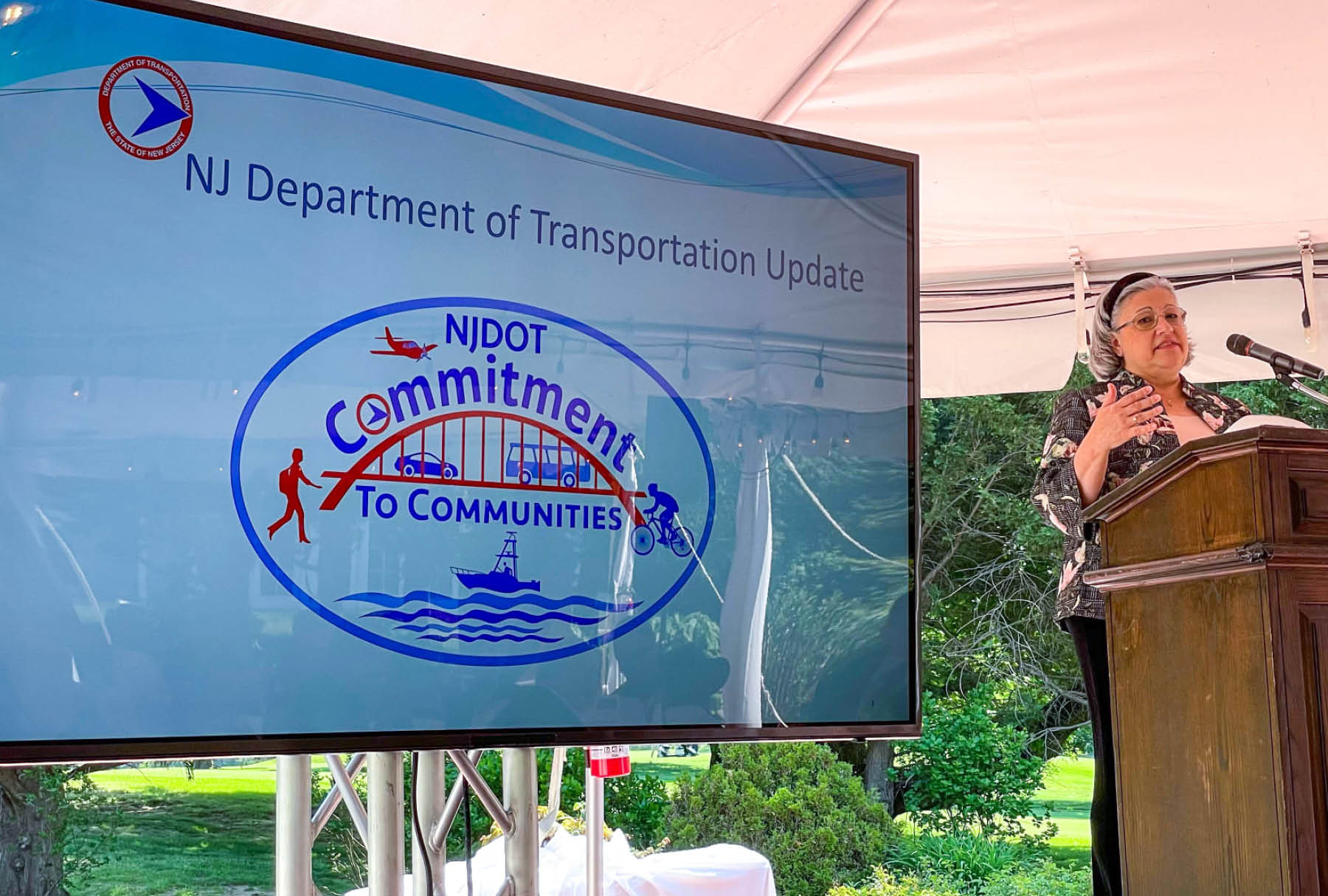
“What motivates me is how we serve our communities.”
“Our job is to make sure people can do their job. And that just motivates me every day because it’s about serving the community – looking beyond just the shiny bridge structure or the new pavement we put down – and getting to the meaning of what we do.
“We’re called departments of transportation, but one day may be called departments of mobility, because transportation is really just a means to get people mobile, to get people where they need to be. And so for me, I can be passionate about that 24/7.”
This focus on communities will see Gutierrez-Scaccetti and her team focus on redefining the NJDOT’s work over the next 12 to 18 months in line with the National Cooperative Highway Research Program (NCHRP), a collaboration between the American Association of State Highway and Transportation Officials (AASHTO) and the Transportation Research Board.
This multi-year process involves coming up with a vision for the next era of transportation in the United States and putting it into action – what Gutierrez-Scaccetti describes as the “next moonshot”.

“Since we built the Interstate Highway System, at least in the 48 contiguous states, we really haven’t done anything together,” she says. “It was clear we needed all of us to work together to build this Interstate system. It’s been phenomenally successful, but that was in the sixties and we worked on it for a number of years. But what do we do now?”
The conclusion that its stakeholders are coming behind is the concept of “community-focused transportation”, she reveals.
“We still have to maintain the Interstate. It still has to be in good shape. We’re not doing a lot of widening work or creating bigger roads, but they have to be maintained. We’re still taking care of bridge replacements, but how do we size ourselves down, at least intellectually, to look at the community?”
Particularly important to Gutierrez-Scaccetti is the work in collaboration with charitable organization United for ALICE, which stands for Asset Limited, Income Constrained, Employed – referring to those above the poverty line but still unable to afford basic living expenses.
“There’s a group of people that live and work day-to-day just above the poverty level, but not enough to take them into the middle class,” she explains. “So they could work two or three jobs, but they still can’t afford to buy a new car. They don’t have adequate transportation to give them better work opportunities, to get them to better health care or get them to better shopping opportunities.
“So we’ve been working with United for ALICE and United Way of Northern New Jersey to understand what transportation’s role is in helping solve this societal problem.”
Every time Gutierrez-Scaccetti goes out on the road to look at projects or discusses projects, she always considers how they will help ALICE – for example, whether a sidewalk should be put on a bridge to make it easier for pedestrians to get across.
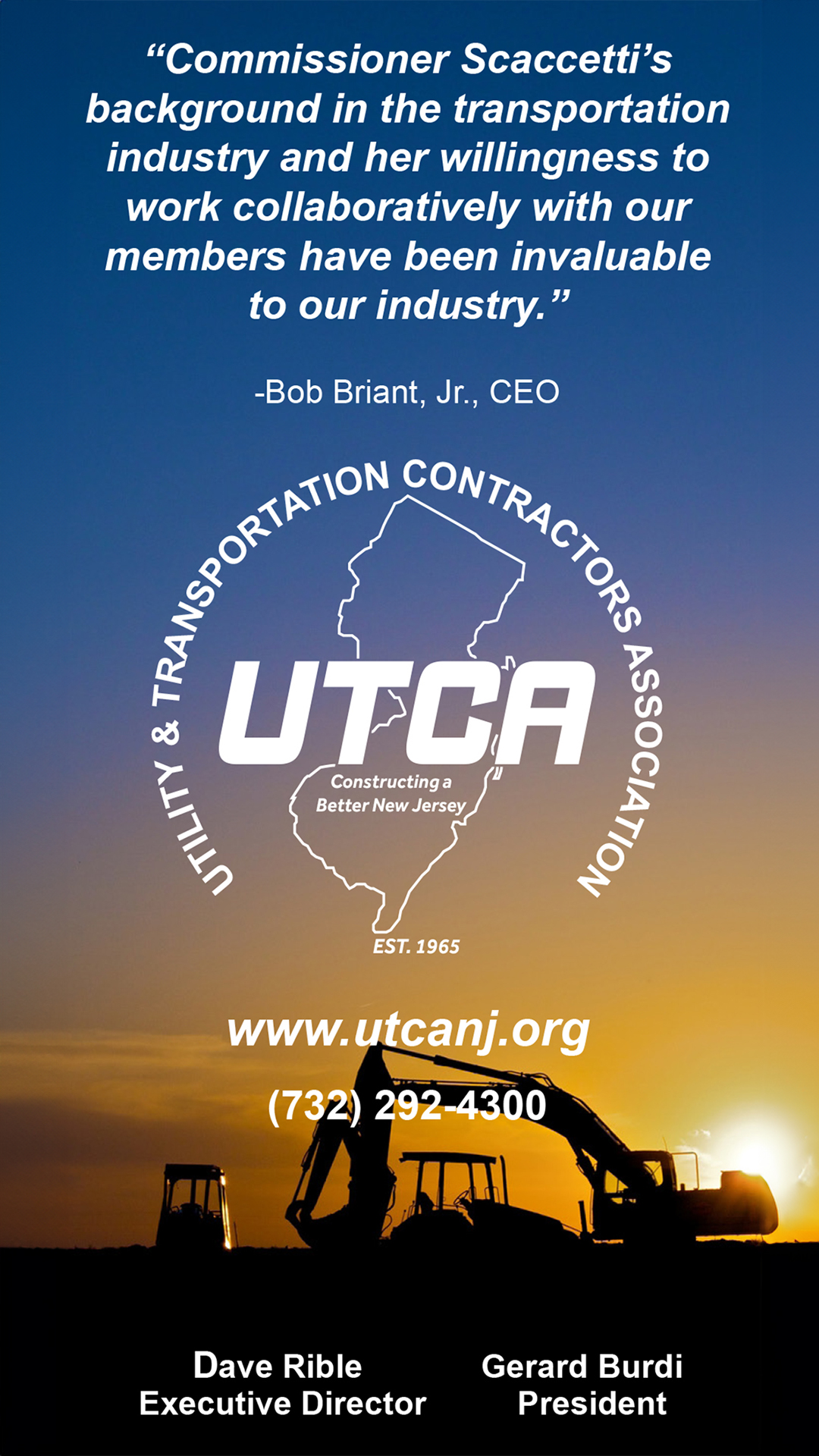
“The next 12–18 months is going to be spent trying to pivot the thinking here to say, ‘yes, we still do really big important stuff’. And we have these really great civil engineers, but I also have really great planners and safety folks who say, ‘how do we create better bike lanes so that if you don’t have a car, you can be safe riding your bike?’” she says.
“How do we make walking safer? By putting sidewalks where they need to be today, planning for tomorrow. When we’re out doing a roadway resurfacing, we’re also putting in Americans with Disabilities Act-accessible ramps at our curbs so that if you can’t step off a curb because you’re mobility-assisted, there’s a ramp for you to use.”
The NJDOT also has a Complete Streets policy, introduced back in 2009, to promote safety for all users of New Jersey roads – including pedestrians, cyclists, transit riders and the mobility impaired.
“When we design the street, it has to be designed for everyone who uses it, whether they walk, ride or roll. It has to be for everybody,” Gutierrez-Scaccetti says. “And my engineers go, ‘That’s impossible.’ And I go, ‘Well, it’s not actually.’ We just have to think about it a little bit. And so it’s kind of getting some of that old-school thinking out and having them think more broadly.”
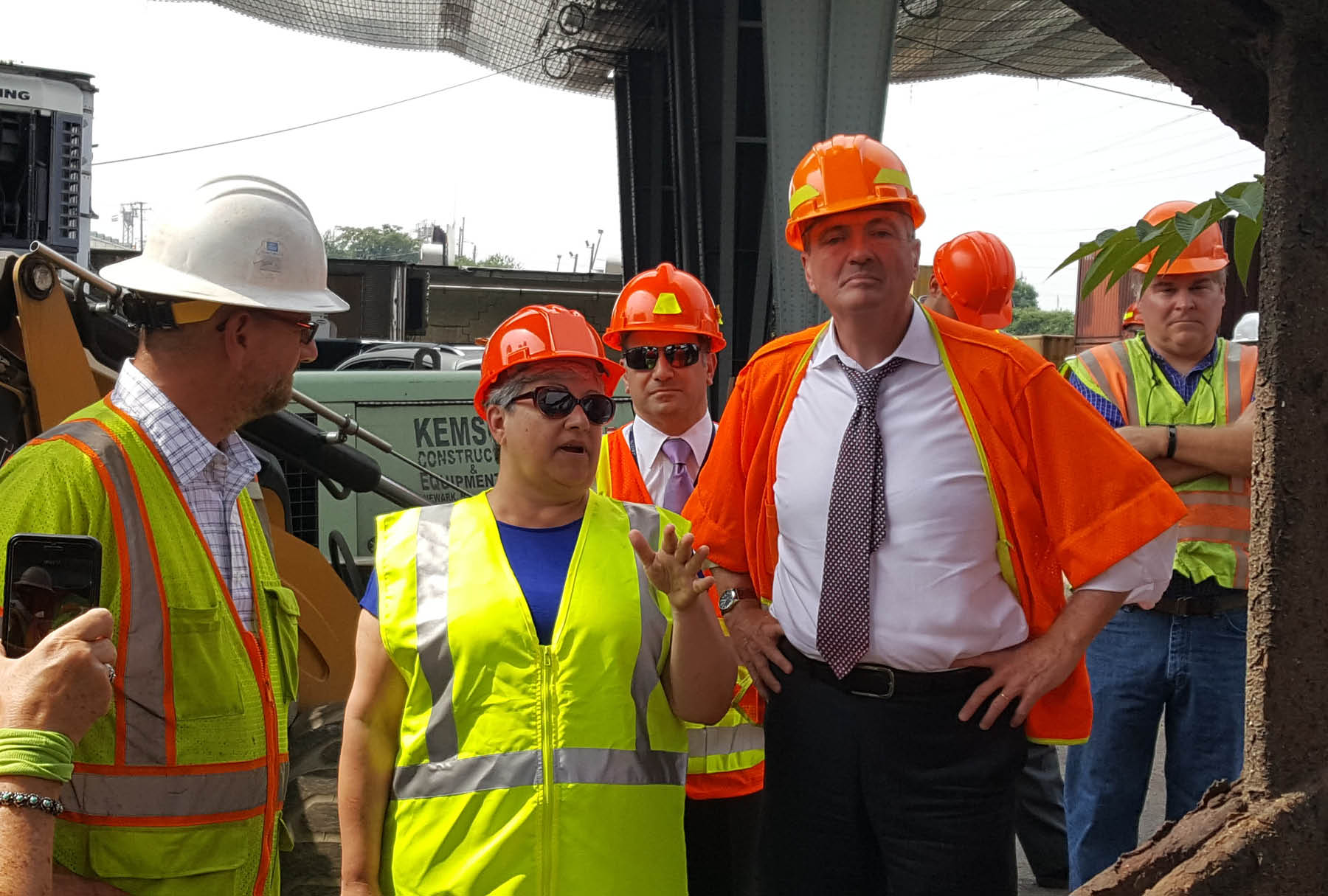
“When we design the street, it has to be designed for everyone who uses it, whether they walk, ride or roll.”
While she admits these types of changes can take time to implement, she insists they must be incorporated into the thought process now in order for them to become a reality. That’s why the organization works closely with a number of partners who share the same vision, such as the American Council of Consulting Engineers of New Jersey, Utility & Transportation Contractors Association and infrastructure design firms such as HNTB and AECOM.
“AECOM and NJDOT share similar core values and goals,” says Glen Kartalis, Senior Vice President at AECOM. “We are each committed to advancing diversity and inclusion as a means of strengthening our knowledge and empowering the next generations of transportation engineers.
“We also hold the common goal of improving and connecting our communities by working towards equitable transportation development and access. AECOM, and NJDOT with Diane as its leader, each view transportation as a powerful tool to achieve these goals.”
This out-of-the-box thinking is instilled in each employee from their very first day on the job thanks to a clever orientation process.
“A member of the leadership team goes to every orientation to meet the new employees and talks about what the organization is and who the people are,” Gutierrez-Scaccetti explains. “And one of the things I always say is, do you understand you’ve gone to work for a US$4 billion balance sheet organization? Because that’s who we are. And everybody’s mouth drops.”
Preparing newcomers for the reality that capital programs can often roll forward because of their sheer scale, and that projects won’t necessarily “start in January and finish in December”, is one objective of the program. Another is to ready them for the role they will play in NJDOT’s success.
“Whatever role you play, you need to play it well. Because if one piece is missing from this puzzle, the picture is not complete,” Gutierrez-Scaccetti says. “We need every puzzle piece here doing its part to create that bigger picture of who we are.
“And that is the message we try to give them – that you are part of a much, much bigger thing than you ever thought you were getting involved with.”
Communication is therefore crucial to ensure each employee feels like a member of a team and that they feel valued.
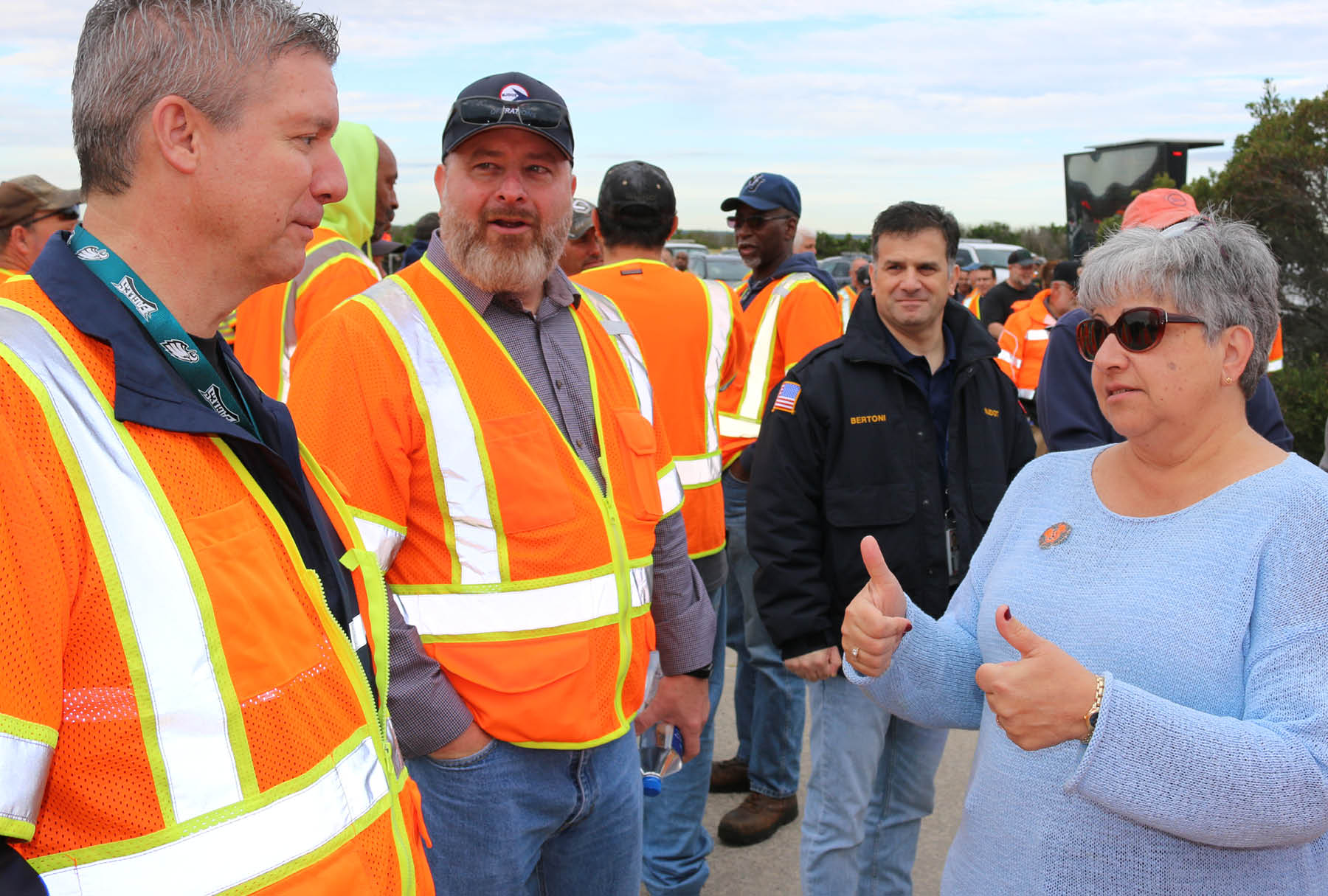
“For me, it’s about making sure people understand just how important their job is.”
“Because really without them, we don’t get very far,” she continues. “We’re a very labor-intensive organization. And so for me, it’s about making sure people understand just how important their job is and why we need everybody running two batteries every day, fully charged and ready to do what needs to be done.”
Gutierrez-Scaccetti says she takes a servant approach to leadership that helps her to get the desired results.
“I can administer tough love in a very sweet way, and maybe sometimes in a not-so-sweet way,” she admits. “But at the end of the day, I try to remember that I came from the ranks that these folks who work here came from. When I started at the New Jersey Turnpike Authority, I was at the bottom of the management chain, and I had to work my way up. And it’s hard work, it’s not easy.”
Making the transition to the NJDOT and a higher-level position was a challenging prospect for Gutierrez-Scaccetti, mainly in terms of acceptance by her new team. “Changes of administration make people nervous. And new leadership teams that come in make people nervous. They don’t know what to expect,” she reflects.
“My responsibility was to win the hearts and minds of the people here to make them understand that I wasn’t here to take their world apart, I was trying to make things better. Not that it wasn’t good before, but the whole idea is to evolve. And everyone who sits in this seat after me should continue to let this organization evolve and be better than it was the day before.”
Over the course of the six years since her appointment, Gutierrez-Scaccetti has achieved this objective, with trials such as the COVID-19 pandemic proving her mettle.
The crucial nature of NJDOT’s work means that it has to work around the clock, and so, even during the pandemic, the department didn’t stop working with construction continuing out in the field.
“At the time, with what we knew about the pandemic, we felt very comfortable if people were working outside, social distancing with masks,” she recalls. “The risk of transmission was relatively low. But we also, from a business perspective, knew if we shut down construction again, we would put a lot of people out of work.”
With tens of thousands of construction workers financially dependent on NJDOT, and the shadow of delay claims worth “millions of dollars” looming, Gutierrez-Scaccetti made the call to recommend to the Governor’s office to continue working, albeit in a safe manner.
“I knew if we had people working out there, that meant I had to be in the office every day because if they could do it, I could do it,” she says. “The rest of the department, for the most part, worked from home. And that was very foreign to state government generally.”

Interestingly, despite the reduction in traffic, the department saw a “really strong uptick” in fatalities as many of those using the empty open highways felt they could put their foot on the gas.
“They forgot that the faster you go, the harder it is to control your vehicle,” Gutierrez-Scaccetti says. “This has been a nationwide problem, this isn’t just New Jersey. We are all very focused on bringing those numbers down and creating safer roads and messaging what it means to be a safe driver as often as we can.”
The numbers are finally starting to come down, she confirms, but they are still not low enough. “We have a lot of work to do in that regard,” she adds.
The pivot to working from home was made “very quickly”, according to Gutierrez-Scaccetti, who adds that, even now, the state policy allows up to two days of remote working per week if required.
However, in her view, this was and continues to be the biggest challenge for NJDOT. “It’s really hard in our business to be truly collaborative, innovative and spontaneous when people aren’t all together,” she expands. “This was something I had to figure out how to do differently.”
But she did, and she is proud of how the department came through the period. In fact, even in the midst of all this commotion, the NJDOT managed to roll out the largest capital plan that it had ever undertaken, with US$1.2 billion of construction taking place in the 2021 fiscal year.
“Even with all those challenges, everybody was doing what you would ask them to do, which was to row in that same direction and understand the importance of our work to keep people working,” Gutierrez-Scaccetti says.
And with so many cars off the roads, the department did not have to limit its construction hours to off-peak periods. “There wasn’t a rush hour during the pandemic, so we could give them a lot of extra daylight hours to work.”
That’s not to say that it was easy, she is quick to point out. But the department is well-versed in handling crises. “We face them every winter, we face them every hurricane season,” she says. “This just was not something we were fully prepared for, a very different kind of challenge, but we were used to handling challenges and the team did phenomenally well.”
Now, as we enter a future where mobility is undergoing significant shifts, the NJDOT is looking at ways to avoid expanding highways and limiting the number of cars on the roads by “pumping up” public transit.
“We want to make public transit both reliable and attractive to people,” Gutierrez-Scaccetti says. “So if I can’t make the turnpike bigger, I need to reduce the number of cars that ride on it. I need to preserve capacity for our trucks, because trucks are always going to be with us whether we like them or not.”
The resulting plan involves a toll increase that supports not only the toll road’s needs, but it will also support the needs of public transit including the Gateway rail investment program. This program aims to improve “reliability, resiliency and redundancy” while creating new capacity for a critical section of the Northeast Corridor which is the most heavily used passenger rail line in the country.
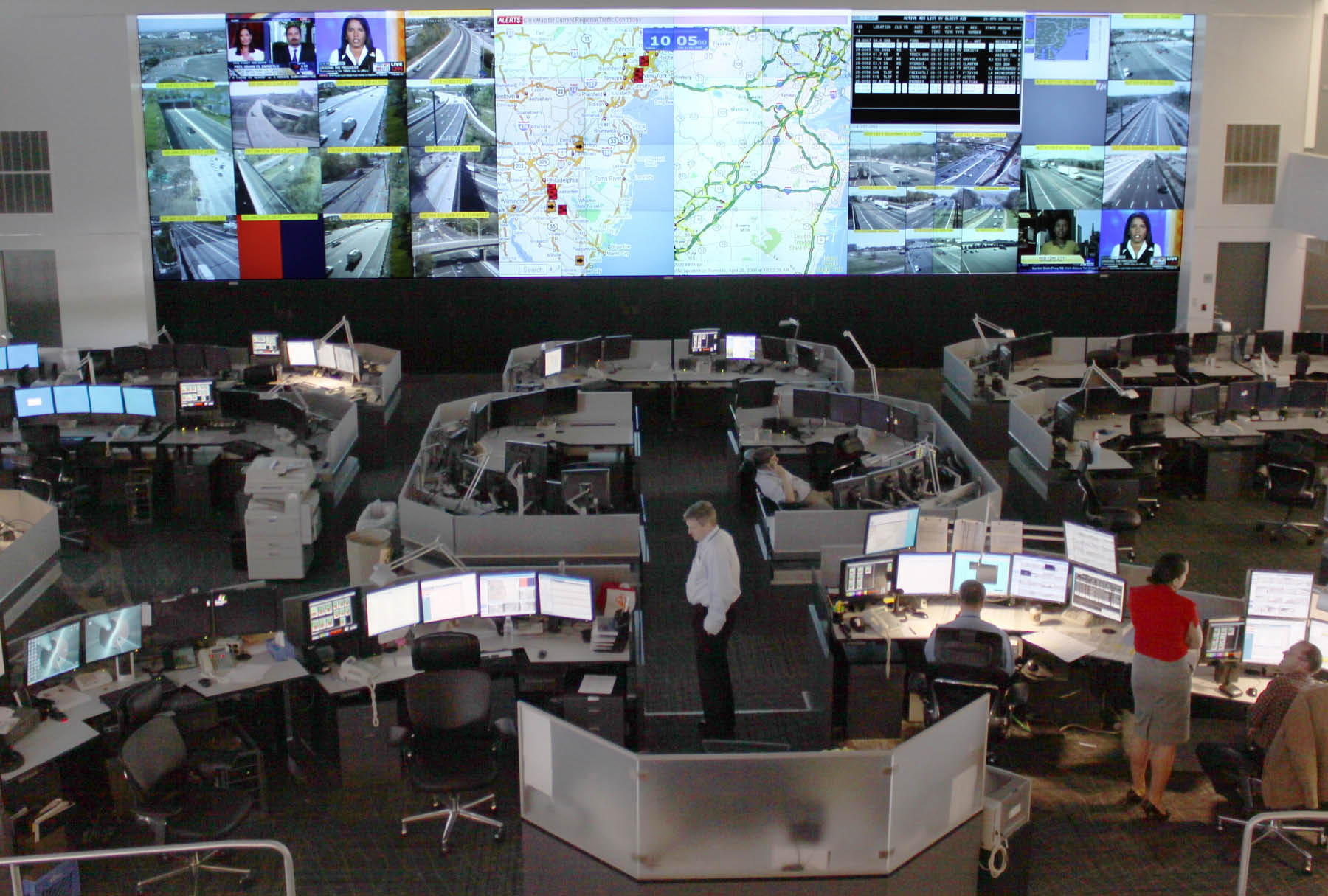
“NJDOT works in the most highly congested state in the country and we are asked to work on roads that are really busy all the time.”
“By 2028, the turnpike will be providing US$500 million a year in operating subsidy to transit so that they can continue to operate the trains and buses,” Gutierrez-Scaccetti says. It will pay for the construction of the new Hudson Tunnel while also covering debt service payments for the Portal North Bridge, also part of the Gateway program. NJDOT will work closely with the Gateway Program Development Corporation to achieve these goals.
“When all is said and done, the turnpike will be providing between US$650 and US$700 million a year in transit support while still maintaining its ability to run its program,” she says.
The scale and complexity of these ambitious programs is what really sets NJDOT apart, according to Gutierrez-Scaccetti, who has been overseeing around US$1 billion of work each year since she took up the position.
“NJDOT works in the most highly congested state in the country and we are asked to work on roads that are really busy all the time,” she says.
“I like to refer to us as small but mighty. We’re a small state, but we’re very, very determined to deliver on our mission of safe and efficient roadways, of storm response and incident management, certainly recovery, and we’ve got a great group of team members that share a passion for what we do.”

